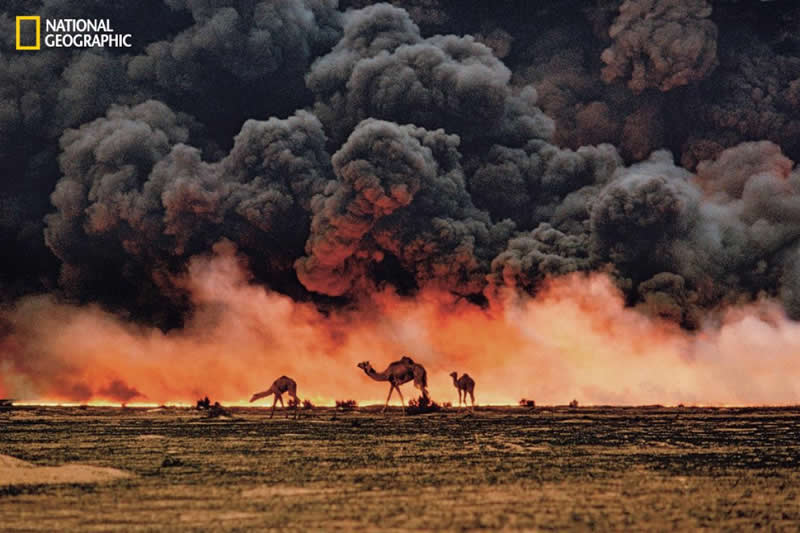The photographs at the Annenberg Space for Photography of National Geographic magazine are cinema-size, faces larger than life, their suffering and innocence unbearable but attached to your memory forever. There are also animals filled with destroyed beauty and a haunting helplessness. In these images nature is the artist. She makes no mistakes. Her landscapes are detailed, not impressionistic. Her figures are realistic, alive. This is the gut-wrenching deal: they are still alive, it really happened and is still going on. And finally, you are forced to re-understand that there is no other species so destructive to itself and the planet than man.
Like you, I already know this. I read the news and watch TV. But looking at these photos, I now feel it, and that is a whole other can of worms—worms that don’t let you sleep and insist that you never rest or forget. Normally when I look at art I long to feel something other than the base emotions that I live with. But these photos are different from art. They do not come out of the imagination of some artist. As a child, imagination is where I hid from reality because in the end it meant nothing, it wasn’t real. These photos are the reverse. They are real and in the end they make you feel just like what you want to escape from. You cannot leave your skin behind—it clings to you like guilt. But people try to do just that. They say, “I don’t want to know these things, it’s too sad, it upsets me. I can’t do anything about it.” I understand this reaction, because once you see these photos, they never go away. They have a life without you and you have no control over them.
There is a small boy working a mine in the Congo so you can have a cell phone—and nobody will do anything about it. Way down deep inside your brain, he will be working in that mine forever. Suddenly art seems a bit frivolous. There is a photograph of a 70-year-old man sitting on a bed next to an 11-year-old girl. They just got married. Now I am angry and I will give anything to change the subject and look at some art, even bad art. There is another picture of a woman with 30 bricks stacked single file on her head. She is an indentured servant and all she does all day long is move bricks—no school, no family, no talking. Now I am without hope. Perhaps Mother Nature has made a mistake in letting us live. And perhaps she is about to rectify that mistake by getting rid of us. One can only hope so when you see the photographs of the animals that are left. These photographs will do something to you that no art can do, something very powerful but not very beautiful. You probably know all this—but if you see the photographs, you will feel it also, feel it so deeply that you won’t be able to ignore it.
Artillery Magazine Vol 8 Issue 6 July-Aug 2014
